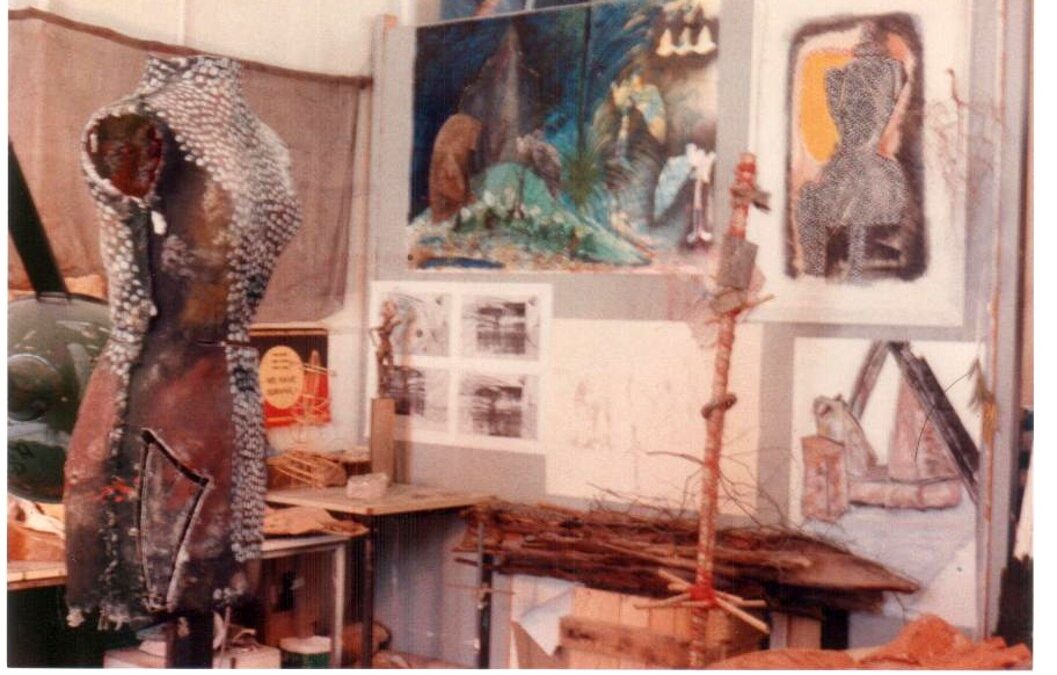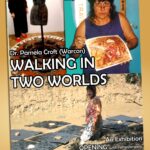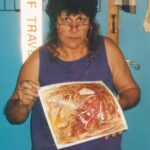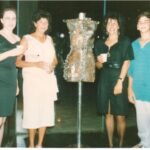Who Is Pamela Croft?
Pamela Croft is an important Australian artist who made really interesting art during the 1980s. Her artwork tells stories about who we are and how we protect ourselves from the world. During the 1980s, she tried many different art materials and created works that still make people think today.
Table of Contents
Her Early Artwork (1983-1985)
When Pamela first started making art in the early 1980s, she used materials like clay, wood, and drawing tools. She made ceramic plaques (flat pieces of decorated clay) and totems (tall sculptures made from tree trunks with ceramic plates attached).
One of her important early drawings was called “Alone.” It was a self-portrait (a picture of herself) made with pastel crayons. Another drawing called “Dispossessed” (1985) used ink and pencil on paper. This drawing showed how she sometimes felt like she didn’t belong.
During this time, Pamela started mixing different materials. She used bamboo, wax, brass, and string in her artwork. This was just the beginning of how she would combine many unusual materials in her later art.
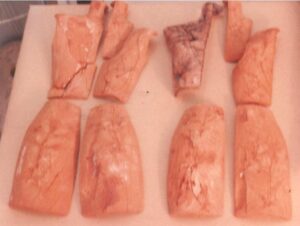
Finding Her Voice: Art About Identity
By the middle of the 1980s, Pamela’s art focused on identity – which means how we see ourselves and how others see us. She created a work called “Searching for Identity” (1986) that explored these ideas.
Pamela believed that who we are is always changing. Her “Cycles” series, made with charcoal and pastel, showed how people are always transforming and growing.
An interesting thing about Pamela’s art is that she noticed differences between how Aboriginal people (Australia’s first peoples) and non-Aboriginal people think about identity. She observed that Aboriginal identity often comes from spiritual connections to the land, while non-Aboriginal identity is often based on how other people see you.
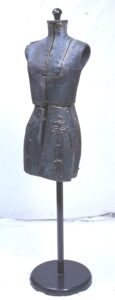
The “Once We Mount the Armour” Series – Her Most Famous Work
Pamela’s most important artwork from the 1980s was her “Once We Mount the Armour” series. This group of artworks used armor as a symbol for how people protect themselves from getting hurt emotionally.
Here are some of the amazing pieces from this series:
“Resurrection”
This sculpture combined three very different materials – marble (a hard stone), brass (a shiny metal), and feathers (soft and light). The marble represented something permanent and strong, while the feathers showed softness and fragility. By putting these materials together, Pamela showed how people can have both strong and delicate parts to their personalities.
“Just Another Rag Doll”
This artwork used handmade paper, wool, and real roses. Imagine a doll made of paper and wool, decorated with roses! The soft materials showed how fragile people can be underneath their “armor” or protective shields. The roses might represent beauty, but roses also have thorns for protection – just like people sometimes put up barriers to protect themselves.
“Conflict”
This sculpture won an award at the 1988 Bicentennial Bundaberg Art Festival. Made from bronze (a strong metal) and sandstone (a type of rock), it showed the battle between wanting to be your true self and feeling like you need to protect yourself. The hard materials represented the struggle people face when deciding whether to show their true feelings or hide them.
The Mannequins
In many works from this series, Pamela used mannequins (the human-shaped forms you see in store windows). She saw these as “empty vessels” – objects that look like people but have nothing inside. She used them to show how people sometimes create a false outside appearance that hides their true self inside.
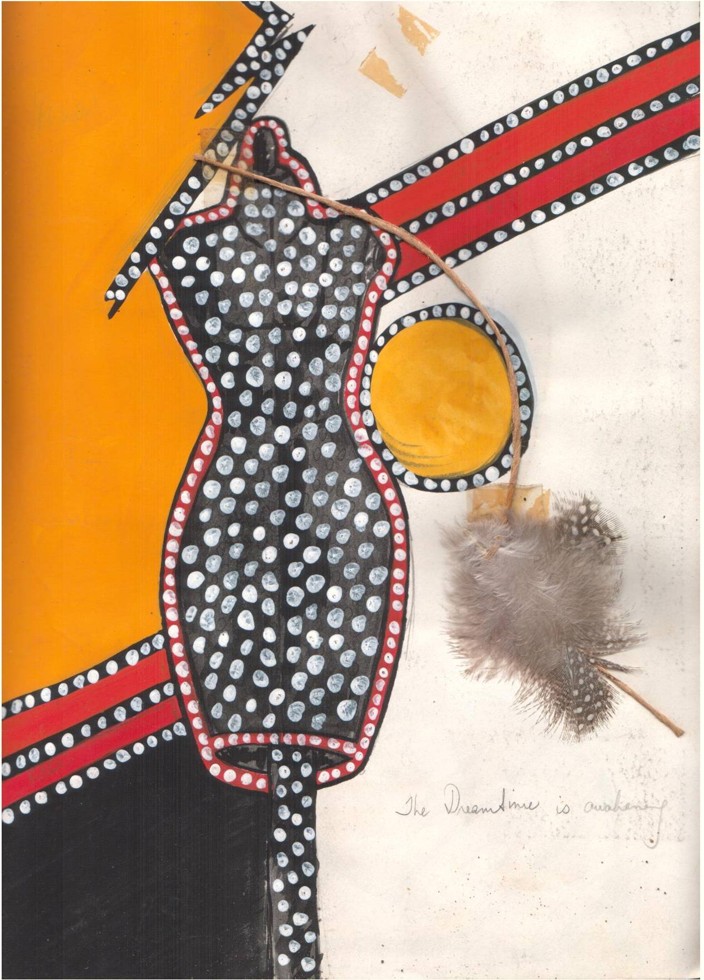
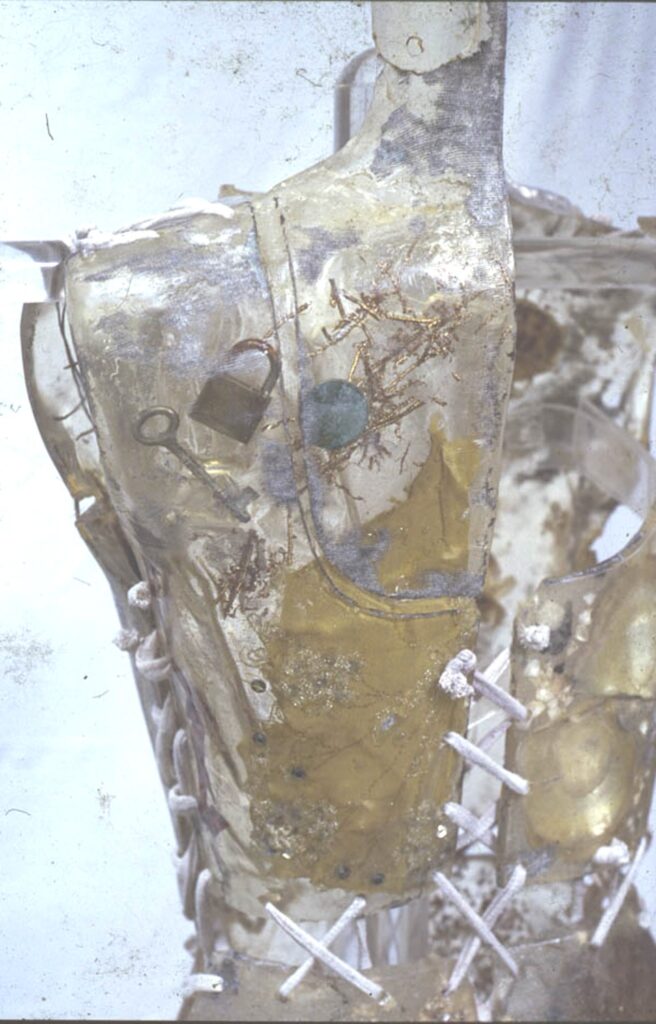
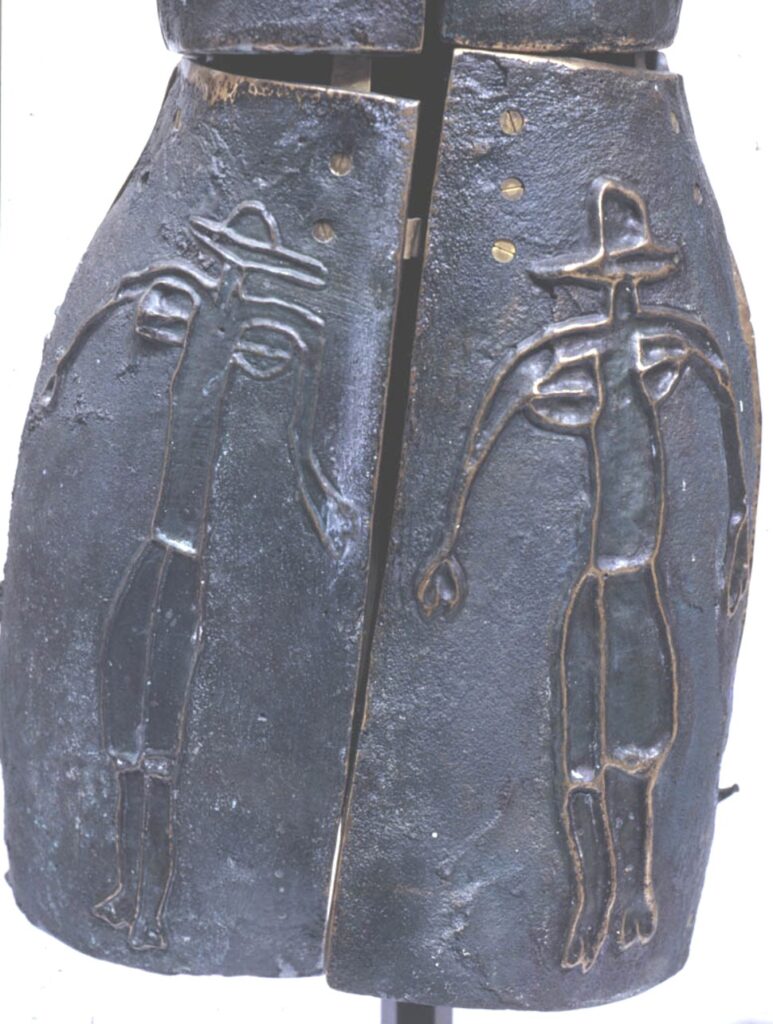
Cool Materials She Used
What made Pamela’s art special was how she used so many different materials. Here’s a list of just some of the things she used in her artwork during the 1980s:
- Ceramic clay
- Wood and tree trunks
- Handmade paper
- Bronze and brass metal
- Marble stone
- Bullet shells
- Feathers
- Gauze fabric
- Wool
- Real roses
- Wax
- String
- Sandstone
By 1987-1988, she was combining these materials in really creative ways. For example, in her “Once We Mount the Armour” series, she might use something hard like marble next to something soft like feathers. This showed how people can be both strong and fragile at the same time.
Where Her Art Was Shown
As Pamela’s art got better and more interesting, more people wanted to see it. Here are some important places her art was displayed:
In 1987, her “Once We Mount the Armour” prints were shown at Little Masters That Contemporary Artspace in Brisbane, Australia.
1988 was a big year for Pamela. Her sculptures were shown in important exhibitions like The National Aboriginal Art Award and The National Women’s Art Award.
At the 1988 Art to Wear Expo, her “Once We Mount the Armour” sculpture made of resin won first prize! This showed that her art could be worn like clothing or jewelry, not just displayed in a gallery.
Later, her artwork was shown at Griffith University in Australia and even traveled to Houston, Texas in the United States, where it was displayed at the Booker-Lowe Gallery in the early 2000s.
Additional information at the bottom of the page:
Why Her Art Matters
Pamela’s artwork from the 1980s is still important today because it helps us think about how we present ourselves to others. Think about how people create profiles on social media that show only the best parts of their lives – this is a kind of “armor” too!
Her artwork about armor helps us understand that sometimes the protection we create for ourselves can become like a prison. When we hide our true selves too much, we might feel lonely or disconnected from others.
By using materials like feathers (soft) next to harder materials like bronze, Pamela showed that people are both strong and vulnerable. Her art reminds us that it’s okay to have both strength and weakness.
The Armor Metaphor Explained Simply
Let’s talk more about what Pamela meant by “armor” in her art. Imagine you’re at a new school and you’re feeling nervous. You might pretend to be super confident or act tough so other kids don’t know you’re scared. That’s like putting on armor to protect your feelings.
Pamela’s art shows that this kind of protection has good and bad sides:
Good side: Armor protects us from getting hurt. Just like real armor protected knights in battles, our emotional armor can protect our feelings.
Bad side: If we wear armor all the time, people never get to know the real us. Also, armor is heavy and can keep us from moving freely or growing.
In her “Once We Mount the Armour” series, Pamela used mannequins (those human-shaped forms from store windows) to show how people can look alive on the outside but feel empty inside when they’re hiding behind fake versions of themselves.
Fun Facts About Her Art Process
When Pamela created her artwork, she didn’t just stick to one way of making art. She tried lots of different techniques:
- Drawing with pastel crayons, charcoal, ink, and pencil
- Sculpting with clay to make ceramic pieces
- Carving and shaping wood
- Making prints using a technique called lithography
- Creating paper by hand
- Assembling different materials to make sculptures
She often started with simple drawings to plan her ideas. Then she would gather materials and start putting them together in interesting ways. For her sculptures, she might spend weeks or even months getting everything just right.
What We Can Learn From Pamela Croft’s Art
Pamela’s art teaches us some important lessons:
- It’s okay to have both strong and fragile parts to your personality.
- Protecting yourself is important, but hiding your true self can make you feel lonely.
- Who you are is always changing and growing.
- Art can use any materials – not just paint and canvas!
- Your personal story matters and can connect with other people’s experiences.
Conclusion: Why Pamela Croft’s Art Is Still Amazing Today
Pamela Croft’s journey as an artist in the 1980s shows us how one person’s ideas can grow and change over time. She started with simple drawings and clay works, then created more complex art that used many different materials.
Her “Once We Mount the Armour” series helps us think about how we present ourselves to the world. Just like her mannequins wearing different kinds of armor, we all choose what parts of ourselves to show others and what parts to protect.
By using materials like feathers next to hard stone, or handmade paper with metal, Pamela showed that people are complicated – we can be both strong and delicate at the same time.
Even though she created this art back in the 1980s, the ideas in Pamela Croft’s artwork still make sense today. In a world where people often create perfect-looking versions of themselves online, her art reminds us that it’s the real, sometimes messy parts of ourselves that connect us to others.
Pamela Croft’s art from the 1980s continues to inspire artists and viewers to think about who they are, how they protect themselves, and what happens when they let others see their true selves.
FAQ: The Art of Pamela Croft (1983-1990)
What are the primary themes explored in Pamela Croft’s artwork from 1983 to 1988?
During this period, Croft’s work prominently explores the complex relationship between identity, protection, and cultural experience. A central theme revolves around the idea of “armour,” both literal and metaphorical, as a means of shielding the self – mind, soul, heart, and body – from emotional pain and societal pressures. This concept extends to the use of mannequins as “empty vessels” representing these protective layers and disguises adopted for navigating Western societal norms. The ambiguity arising from the intersection of people and fashion, tribal stature, and armour is also a key concern. Furthermore, the distinction between externally determined images for non-Aboriginal peoples and spiritually informed identities for Aboriginal peoples appears as a significant undercurrent in her artistic inquiry.
What materials and techniques did Pamela Croft employ in her art during this time?
Croft utilized a diverse range of materials and techniques, reflecting her multidisciplinary approach. Her portfolio includes videos, performance art (such as the “Tropicarnival Gold Coast Festival”), and two and three-dimensional artworks. Within her 2D and 3D pieces, she incorporated materials like tree trunks, ceramic plates, bark, wattle, oil and watercolour paints, bamboo, wax, gauze, brass, coloured wax, string, wood, ink, pencil, pastel, gouache, feathers, marble, bronze, bullet shells, artist’s handmade paper, wool, roses, photographs, charcoal, and sandstone. This eclectic selection suggests an experimental approach to conveying her thematic concerns through varied textures and forms.
What is the significance of the “Once we mount the armour” series?
The “Once we mount the armour” series appears to be a pivotal body of work for Croft during this period. It is highlighted as a thematic series for a solo exhibition and manifests across various media, including videos, handmade paper works, ceramic bisk fire pieces, bronze and resin sculptures, and lithograph prints. This recurring title underscores the central theme of protection and disguise, suggesting a deep exploration of how individuals adopt external “armour” and the subsequent consequences, which Croft found to be more of an “emotional prison than a protection.”
How does Croft address the concept of identity in her art from this period?
Croft’s exploration of identity is multifaceted. She examines how fashion and external presentation contribute to or mask one’s true self. The use of mannequins as “empty vessels” acting out acceptable Western behaviour implies a commentary on imposed identities. Her reflection that “by using the armours, I had learnt to hide me: my identity; my traumas; my pain; and my vulnerability” reveals a personal struggle with the performative aspects of identity. Works like “Searching for identity” (1986) explicitly engage with this theme, while the distinction she draws between external image determination for non-Aboriginal people and spiritual identity for Aboriginal people suggests a cultural dimension to her exploration of selfhood.
What role do “masks” play in Croft’s artistic expressions during these years?
The “human form/mask” is explicitly identified as a “site for decoration” and “projectors of images” in Croft’s statement. This suggests that masks function as a visible manifestation of the “armour” she describes. They serve as a surface for external presentation and potentially conceal the inner self. The inclusion of a work simply titled “Mask” (1988) further emphasizes the significance of this motif in her exploration of identity, disguise, and the performance of social roles.
Can you identify any specific cultural or personal influences on Croft’s work during 1983-1988?
The text explicitly mentions Croft’s reflection on the difference in how images are determined for non-Aboriginal and Aboriginal peoples, hinting at a potential engagement with her own cultural background or observations on cultural identity. The inclusion of works like “Totems” (1985) and “Mother Spirit” (1987), which utilize materials like tree trunks, bark, and paperbark, could also suggest an engagement with Indigenous Australian art traditions or spirituality. Her statement about hiding her “traumas” and “pain” indicates that personal experiences likely played a significant role in shaping her artistic concerns.
How did Croft’s work evolve in terms of exhibition and recognition between 1983 and 1988?
The provided text highlights a growing presence and recognition for Croft’s work during this period. She moved from presenting a portfolio of works from 1983-1988 to participating in various group and solo exhibitions. Notable events include the thematic solo exhibition “Once we mount the armour,” participation in the “Tropicarnival Gold Coast Festival,” and inclusion in exhibitions like “Art Bilong Tudei,” “The National Aboriginal Art Award,” and “The National Women’s Art Award.” Winning 1st Prize Acquisitive at the 1988 Bicentennial Bundaberg Art Festival for her sculpture “Conflict” signifies increasing critical acclaim and acquisition of her work by public collections.
What does Croft’s use of materials like bullet shells and the title “Resurrection” (1987) suggest about her thematic concerns beyond identity and protection?
The inclusion of materials like “bullet shells” in “Resurrection” (1987) hints at themes of violence, conflict, and potentially healing or rebirth. This suggests that Croft’s artistic concerns during this period extended beyond the personal exploration of identity and protection to engage with broader social or political issues. The juxtaposition of these harsh materials with the concept of “Resurrection” implies a contemplation of overcoming adversity or finding new life after trauma or conflict.
Exhibitions up to 1990:
1983
“Untitled works 1983” exhibited in the Artist’s studio (this likely includes works like Totems 1985, Ceramic plaques 1985, and other untitled pieces listed)
1985:
Totems 1985, Qld College of Art Brisbane1 … (tree trunks, ceramic plates (left) tree trunks, ceramic plates, bark and wattle (right)
Ceramic plaques 1985, Qld College of Art Brisbane (oil & watercolour paints)
1986:
Cycles 1986 charcoal & pastel drawing, Artist’s collection3
1987:
Included in 1987 Little Masters That Contemporary Artspace Brisbane3 (likely includes Cycles 1986)
Solo Exhibition: Once we mount the armour4 (included videos, performance at Tropicarnival Gold Coast Festival, and 2 & 3 D artworks)
Little Masters That Contemporary Artspace Charlotte St Brisbane: We can Mount the Armour 1987 lithograph print series
Just another rag doll 1987, Irons in the Fire 1991 McWhirter’s Artspace Fortitude Valley Brisbane
Resurrection 1987, [likely exhibited, though specific venue in 1987 isn’t mentioned, later connection to “Irons in the Fire 1991”]
Conflict 1987 Bronze & Sandstone Sculpture, 1988 Bicentennial Bundaberg Art Festival
Mother Spirit 1987 Collage paperbark, artists handmade paper & feathers, 1990 Kung Gubunga Dreamtime Gallery The Oasis Broadbeach Qld
Mother Spirit 1987 Wax, string, brass and granite Sculpture, 1990 Kung Gubunga Dreamtime Gallery The Oasis Broadbeach Qld
Mother Spirit 1987 Brass & plaster Sculpture, 1991 The Space Defined Sculptural Exhibition St John’s Cathedral Brisbane
Once we mount the armour 1987 artist’s handmade paper, [exhibition venue not specified, but likely part of the solo exhibition or other group shows]
Once we mount the armour 1987 ceramic bisk fire & bronze, [exhibition venue not specified, likely work in progress displayed or part of other exhibitions]
We can Mount the Armour 1987 lithograph print series, 1990 Duality..my story, my place Brutal Galerie Fortitude Valley Brisbane
Once we mount the armour 1987 Bronze, Ceramic & Resin Sculptures, 1990 Duality..my story, my place Brutal Galerie Fortitude Valley Brisbane
Once we mount the armour 1987 Bronze Sculpture, 1988 Art Bilong Tudei The Riverside Centre Eagle Street Brisbane Queensland
Once we mount the armour 1987 Bronze Sculpture, 1988 The National Aboriginal Art Award The Museums & Art Galleries of the Northern Territory
Once we mount the armour 1987 Bronze Sculpture, 1988 The National Women’s Art Award The Centre Gallery Southport Gold Coast Queensland
Once we mount the armour 1987 Resin Sculpture, 1988 Art Bilong Tudei The Riverside Centre Eagle Street Brisbane Queensland…
Once we mount the armour 1987 Resin Sculpture, 1988 Art to Wear Expo 88 French Pavilion Southbank Brisbane Queensland … (1st Prize )
Once we mount the armour 1987 Ceramic Sculpture, 1990 Gold Coast Sculpture Award Gold Coast City Council Evandale Queensland
1988:
The Caroline Barker City of Brisbane Art Award: Cycles 1986
Bicentennial Bundaberg Art Festival: Conflict 1987 Bronze & Sandstone Sculpture (1st Prize Acquisitive)
Art Bilong Tudei The Riverside Centre Eagle Street Brisbane Queensland: Once we mount the armour 1987 Bronze Sculpture, Once we mount the armour 1987 Resin Sculpture.
The National Aboriginal Art Award The Museums & Art Galleries of the Northern Territory: Once we mount the armour 1987 Bronze Sculpture
The National Women’s Art Award The Centre Gallery Southport Gold Coast Queensland: Once we mount the armour 1987 Bronze Sculpture
Art to Wear Expo 88 French Pavilion Southbank Brisbane Queensland: Once we mount the armour 1987 Resin Sculpture (1st Prize), Mask
1990:
Kung Gubunga Dreamtime Gallery The Oasis Broadbeach Qld: Mother Spirit 1987 Collage paperbark, artists handmade paper & feathers, Mother Spirit 1987 Wax, string, brass and granite Sculpture
Duality..my story, my place Brutal Galerie Fortitude Valley Brisbane: Mother Spirit 1987 Brass & plaster Sculpture, We can Mount the Armour 1987 lithograph print series, Once we mount the armour 1987 Bronze, Ceramic & Resin Sculptures5 …
You came to my country and didn’t turn black- Queensland Museum Brisbane:
Gold Coast Sculpture Award Gold Coast City Council Evandale Queensland: Once we mount the armour 1987 Ceramic Sculpture, Once we mount the armour 1987 Resin Sculpture, Once we mount the armour 1987 Bronze

